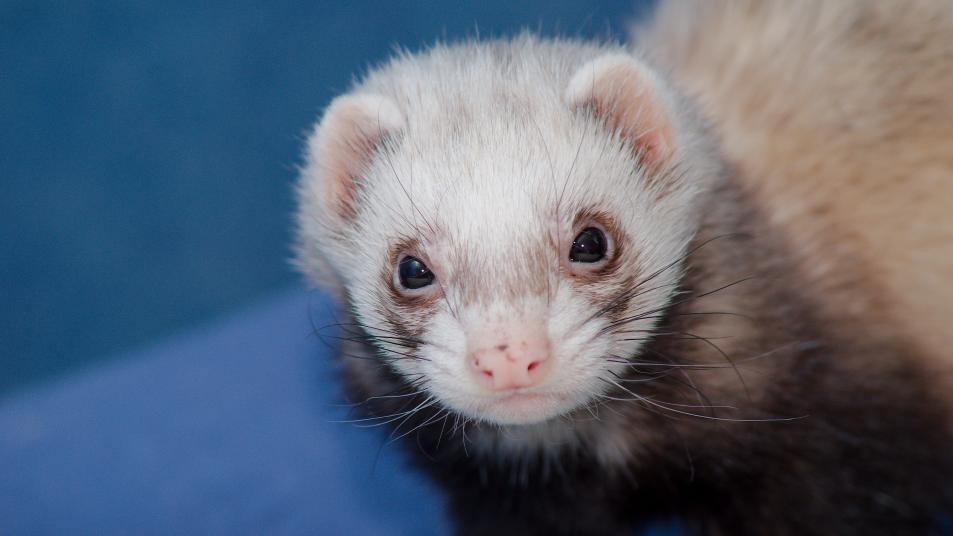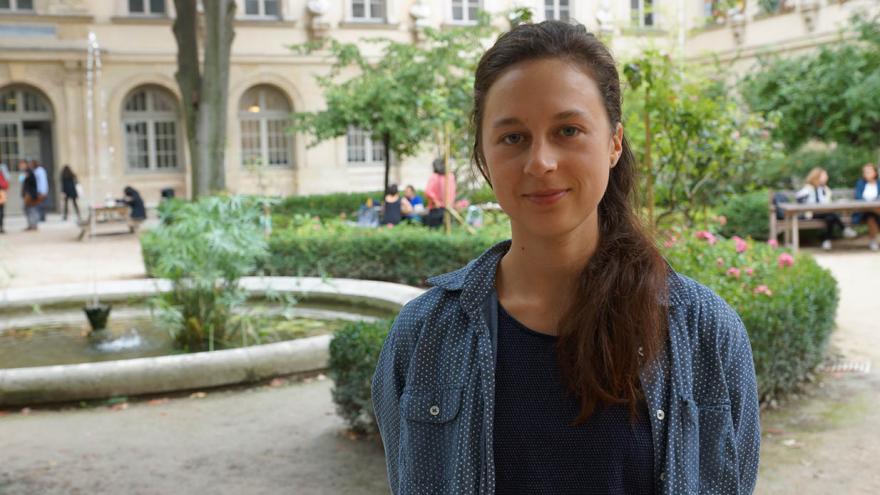
News
At the heart of the brain and sound perception by ferrets
Published on
21 September 2021
, updated on
28 May 2024
Image

"We can image the entire auditory cortex, we have a global view of the activity". Using an ultrasound imaging technique, Agnès Landemard is carrying out her thesis on the brain activity of ferrets.
The difference between the ferret brain and the human brain
She makes the ferrets listen to natural sounds such as speech, music, cricket sounds, and on the other hand synthetic sounds created to be partially similar to natural ones, acoustically. "Let's take a speech recording. We'll calculate all the low-level acoustic characteristics of that sound. Then we'll force the synthetic sound to have the same characteristics. We're going to get a sound that's pretty close but is going to be missing all the higher-level features, like phonemic structure, that are very present in speech."
While the ferret is confronted with these sets of sounds, the activity is combed through by Agnes with the help of a probe that allows her to identify responses to the sounds. "It is an imaging technique that is based on the emission and reception of ultrasonic waves. You have to install a cranial window first because the ultrasound doesn't pass through the skull very well." This process measures blood flow, which shows variations in blood flow related to neural activity. "We put paste to seal [the cranial window] and when we need to image, we just remove the cap. We add ultrasound gel and position the probe right on top." This recent technique was initially developed by Michael Tanter's team at ESPCI.
Image

In humans, this experiment was also carried out, this time using functional MRI. This made it possible to observe specific responses in the auditory cortex, which analyzes the information extracted from sounds. It was thus possible to identify brain activity related to the high-level auditory characteristics of speech and music, which are present in natural sounds but not in their synthetic equivalents.
The goal of the experiment is to find out if this differentiation of sounds in the auditory cortex is present in animals or if it is specific to humans.
As a result of this study, the data show that the ferret does not show these specific responses. In animals, the response to natural and artificial sounds is very similar and almost identical. But that doesn't mean the ferret is unable to tell the difference. "We don't see it in the brain. We played sounds of baby ferret vocalizations and did the same experiment, to see if these responses were conditioned by the relevance of the sounds to each species." Agnes explains that the results were the same at the brain level but different at the behavioral level. By filming them and measuring their movement, they realized that when the ferrets listened to the natural vocalizations of baby ferrets, their reaction movement was more developed.
Biology, naturally
Before coming to her thesis on ferrets, Agnès Landemard went through a scientific preparatory program, physics and chemistry "without necessarily knowing what I wanted to do, it was the path without thinking". After two years, she entered the École Polytechnique and discovered biology. She discovered something completely new. She explains, "I had a course in neurobiology with Sonia Garel and I found it fascinating. In her third year, she specialized in biology and went to Japan to do her research internship. She then joined the ESPCI for her fourth year and did her master's internship in the perceptual systems laboratory where she studied the effects of context on speech encoding in the auditory cortex of the ferret.
A career in neuroscience
Image

Looking back on her project, she explains that she had an experiment that quickly yielded results. "It made me want to do research when it wasn't necessarily my original plan." She clarifies that she is not sure this is what she will do for the rest of her life, but that for now she is interested in continuing in this direction, "I would like to do a postdoc."
"I'm working on a technique that's not widely used yet and the ferret is a relatively unused animal so I know I'm going to have to change a lot of things. There are a lot of exciting questions in sensory systems neuroscience, I'm also looking forward to tackling new problems."



Be the first to review this item, please login or register.
Sign-inRegister